| Image | Mortal | Born | Died | Biography |

|
Anderson John James
|
1860
|
?
|
He had been employed by the travel and tour company, Thomas Cook & Son for around twenty years and latterly as an accountant, receiving an annual salary of £200 per annum. At his Old Bailey Trial, on the 5th February 1894, he pleaded guilty to charges of forgery and embezzlement. He was accused of embezzling the ‘sums of £47 18s. 3d., £48 10s. 4d., and £55 0s. 3d., the moneys of his master, John Mason Cook; also, to embezzling £67 4s. 3d. and £60 1s., and to five indictments for forging and uttering receipts for the payment of money. Mr. Mathews, for the prosecution, stated that prisoner had stolen between April, 1886, and December, 1893, £964 19s. 6d.’
|

|
Andrews Emma Buttles
|
1837
|
1922
|
She was the long-time mistress and companion of Theodore Montgomery Davis. She was born on the 13th June 1837 in Columbus, Ohio, USA, the youngest of the twelve children of the influential Connecticut banker, Joel Buttles (1787-1850) and his wife Lauretta Barnes (1794-1871). In 1857 she married into even more wealth, on becoming the wife of the Ohio attorney, Abner Lord Andrews (1833-1897). After her husband became an invalid when just twenty-seven years old, they separated and she went to live in Rhode Island with Davis. She herself died on the 19th January 1922 in Washington DC and like Davis, never lived to see the discovery of the tomb of Tutankhamun.
|
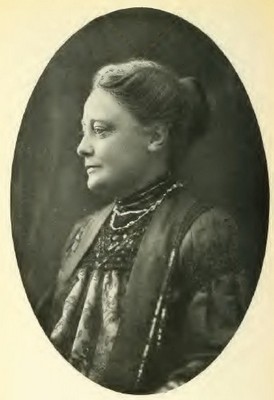
|
Benson Margaret
|
1865
|
1916
|
She was born on the 16th June 1865 at Wellington College, Sandhurst, Berkshire, England the youngest daughter of Archbishop Edward White Benson (1829-1896) and his wife Mary Sidgwick (1841-1918). She was educated firstly at Truro Girls' High School from its founding in 1879 until July 1883; and in that October she entered Lady Margaret Hall, Oxford, where she read philosophy and political economics. As a result of the frustration she felt, resulting from her frequent chronic ailments and at her life in general, Margaret began travelling with her brother Edward Frederick Benson (1867-1940); and it was to the Luxor Hotel she came in the January of 1894. Her work as an archaeologist in Luxor during the years 1895-1897 are described in detail in Chapter 6, as is her encounter with Flossie and Meretseger. In 1907 she suffered a mental breakdown, severe depression and occasional delusions, but generally remained quite lucid. She died peacefully on the 13th May 1916 in Wimbledon, Surrey.
|

|
Birch Florence Averil
|
1875
|
1912
|
Flossie was born on the 22nd April 1875 at Peshawar in British India (now Pakistan), the youngest of the four children of Henry Holwell Birch and his wife Sarah Henrietta Mawson. She is one of the principal characters of 'The Field of Reeds'. Her life story is told within the pages of my book.
|
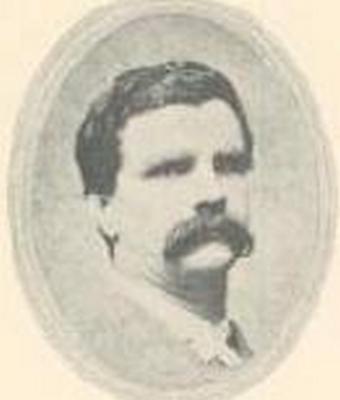
|
Birch Henry Holwell
|
1837
|
1878
|
He was born on the 2nd of September 1837 at Sitapur, Uttar Pradesh, India, the eighth of the nine children of Brevet Lt. Col. Frederick William Birch (1804-1857) and his wife Jean Walker. After completing his education in England at a school run by the Rev. Richard King Bedingfield at Warfield, Berkshire, he returned to India, where during the Mutiny of 1857 served in the defence of the Residency at Lucknow. He served with 27th Bengal Native Infantry. in China in 1861 and in the Lushai expedition of 1871-2 and at Jowaki in 1877. At Ali Musjid on the 21st Nov. 1878 he went forward to assist a wounded Officer of the 14th Sikhs and was shot through the heart. His body was taken to Peshawar for burial – ‘Sacred to the memory of Major Henry Holwell Birch. Bengal Staff Corps. who fell on 21 November 1878 when in command of the 27th Punjab Infantry and gallantly leading an assault on the enemy's redoubts in front of Ali Musjid in the Khyber Pass’.
|

|
Birch Sarah Henrietta Mawson
|
1845
|
1921
|
She was born on the 2nd of March 1845 in Calcutta (Kolkata), India, the daughter of a newspaper proprietor, John Mawson (c1814-1859) and his wife Mary Ann Cropley (c1823-1848). In 1867 at Murree, Punjab, Pakistan (then India), she married the Indian Army Officer, Lt. Henry Holwell Birch of the 27th Bengal Native Infantry. She ended her days in the quiet seaside town of Bexhill-On-Sea, on the south coast of England, a far cry from her years spent on the North-West Indian frontier. When she died it must have been of some comfort to her to know that it had not been a wasted life. She had loved and been loved, and had felt great joy in seeing her daughter overcome the terrible affliction that had carried away so many. She also knew that this had been no random act of luck, but a moment of kismet when God had showed her briefly the two-sided coin of destiny - the survival of her daughter for the life of her husband. It is often best not to know the future, for there is always a heavy price to pay by someone. No one knew this better than Sarah Henrietta Mawson Birch, who passed away on the 19th of December 1921 at her home she had named - ‘Kismet’.
|

|
Birch Thomas Henry William Muir Longmore Mawson Holwell Comyns
|
1898
|
1998
|
He is one of the principal characters of this my book, whose life story is told within its pages.
|
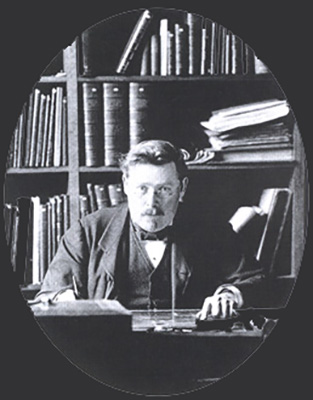
|
Budge Sir Ernest Alfred Thompson Wallis
|
1857
|
1934
|
He was an English Egyptologist who acquired the Ancient Egyptian ‘Book of the Dead’ known as the Papyrus of Ani. The story of its discovery is told in Chapter 5 of this my book. He was born on the 27th July 1857 in Bodmin, Cornwall, England, the illegitimate son of Mary Ann Budge, a milliner (c1837-1863). From an early age he realised he had a talent for languages and in 1879 he became an undergraduate at Christ’s College, Cambridge, where he received his BA in 1881, MA in 1885 and D.Litt. in 1891. After his graduation he gained a position in 1883, as an assistant keeper in the Assyrian and Egyptian department at the British Museum. That same year he married Dora Helen Emerson (1858-1926), the daughter of a Northumberland Cleric. In 1893 he was promoted to keeper of the Assyrian and Egyptian department, a position he held until 1924. He was knighted in 1920. He died at his home at 16 Fitzroy Square, London on the 23rd of November 1934 and is buried in Nunhead Cemetery, Southwark. He had no known children.
|
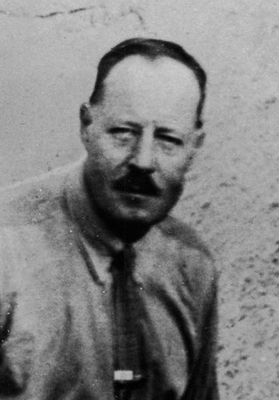
|
Callender Arthur Robert
|
1875
|
1936
|
He was a former Egyptian railway engineer and manager, who assisted Howard Carter during the clearance and cataloguing of the tomb of Tutankhamun from 1922 onwards. He was born on the 13th December 1875 at Skirbeck, near Boston, Lincolnshire, England, the eldest of the two sons of Robert Callender (c1836-c1896), a native of Stockton-on-Tees, Durham and his wife Matilda Pepper (c1845-1926). Following his retirement in about 1920, he built a house at Armant, a small town some twelve miles south of Luxor. He had married Eliza Clara Reynolds (1876-1939) in Alexandria, Egypt in 1901 and they had two sons. Ralph Callender (1908-1969) and Ian Callender (1911-c1941), who unlike their father and grandfather did not go on to become Egyptian railway engineers. Ian instead pursued a career as a Market Gardener and died in Buenos Aires, Argentina in 1941; whilst his elder brother Ralph worked for the Eagle Oil & Shipping Company.
|
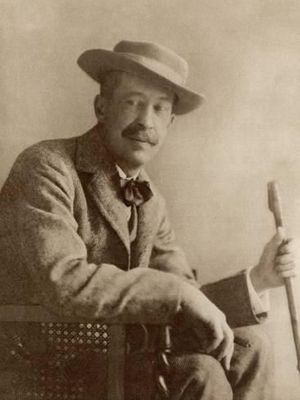
|
Carnarvon 5th Earl
|
1866
|
1923
|
George Edward Stanhope Molyneux Herbert was born on the 26th June 1866 at 66 Grosvenor Street, London, the second of the four children of Henry Howard Molyneux Herbert, 4th Earl of Carnarvon (1831-1890) and his first wife, Evelyn Georgiana Catherine Stanhope (1834-1875). In 1890 he inherited the Earldom after the death of his father. But in order to save his family’s estates, he was forced to marry for money to pay off his enormous debt of around £150,000. On the 26th June 1895 at St. Margaret’s Church, Westminster, he married Almina Victoria Maria Alexandra Wombwell, supposed daughter of Capt. Frederick Charles Wombwell (1845-1889) and his French wife Maria Felicia Boyer (c1851-). She was in fact the illegitimate daughter of an illicit affair between her mother and the Jewish banker Alfred Charles Freiherr de Rothschild. It was through his association with Howard Carter and the discovery of the boy King’s tomb, that the 5th Earl redeemed his honour; and for once did something worthwhile in an otherwise wasted life. His name will now be spoken for ever, like that of the forgotten Pharaoh he helped find. He died on the 5th April 1923 at the Continental Savoy Hotel in Cairo supposedly from pneumonia resulting from facial erysipelas caused by an infected mosquito bite.
|
| | | | | |
|